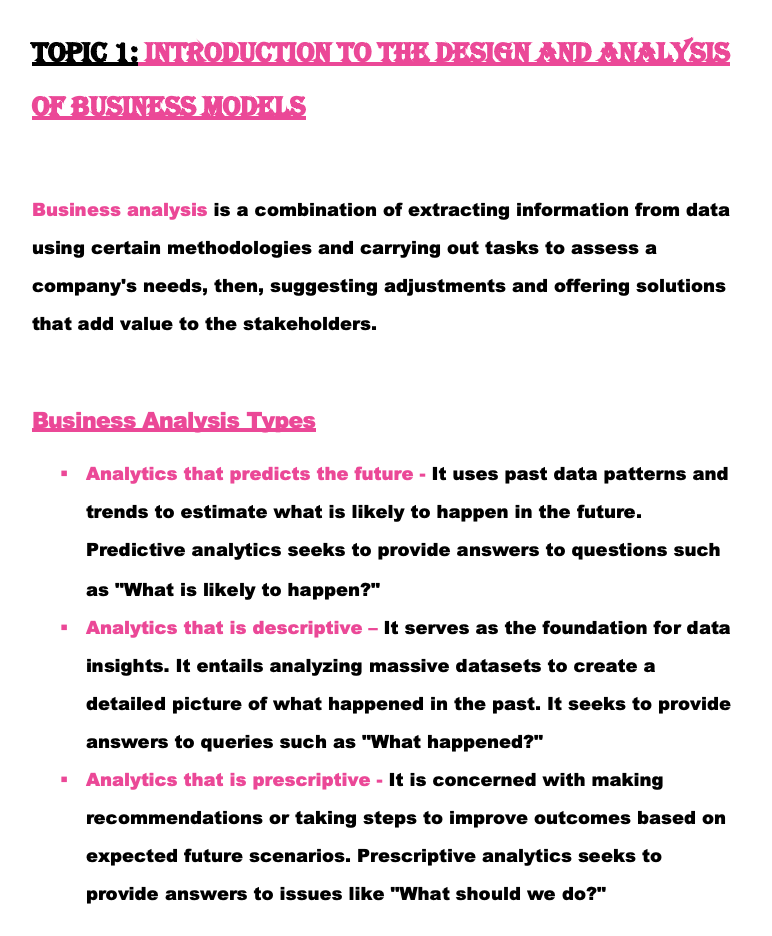Business Model Creation and Analysis
Summary:
The note provides a comprehensive overview of business model creation and analysis. It covers various topics, starting with an introduction to the design and analysis of business models from pages 2 to 6. The note then delves into different types of business models, spanning pages 7 to 48.
The document includes a tool for developing business models, presented on pages 49 to 56, which likely aids readers in structuring their ideas effectively. Additionally, there are guidelines on evaluating the viability and significance of a business model on pages 57 to 61, assisting individuals in determining the potential success of their proposed models.
The note also explores models of disruptive businesses, covered from pages 62 to 68. This section may provide insights into innovative and game-changing business strategies.
Finally, the note addresses how to put a company concept to the test, offering guidance on practical implementation and verification of the business model. This final section is found on pages 69 to 71.
Excerpt:
Business Model Creation and Analysis
TOPIC 1: Introduction to the design and analysis of business models
Business analysis is a combination of extracting information from data using certain methodologies and carrying out tasks to assess a company’s needs, suggesting adjustments and offering solutions that add value to the stakeholders.
Business Analysis Types
- Analytics that predicts the future – It uses past data patterns and trends to estimate what is likely to happen in the future. Predictive analytics seeks to answer questions such as “What is likely to happen?”
- Descriptive Analytics – It serves as the foundation for data insights. It entails analyzing massive datasets to create a detailed picture of past events. It seeks to provide answers to queries such as “What happened?”
- Prescriptive Analytics is concerned with making recommendations or taking steps to improve outcomes based on expected future scenarios. Prescriptive analytics seeks to answer issues like “What should we do?”
- Analytics for diagnosis entails evaluating historical data to determine the underlying causes of specific events or patterns. It seeks to answer queries like, “Why did it happen?


Reviews